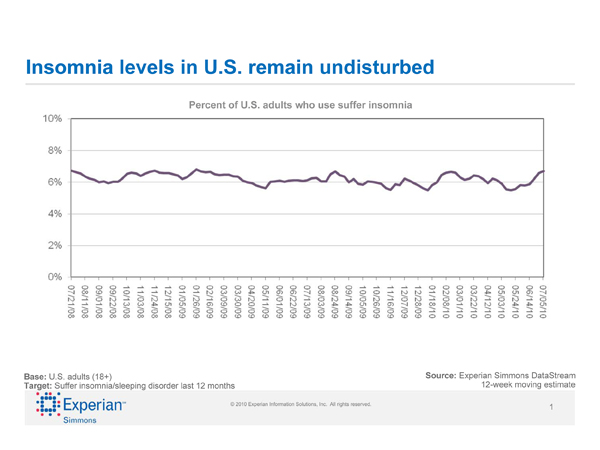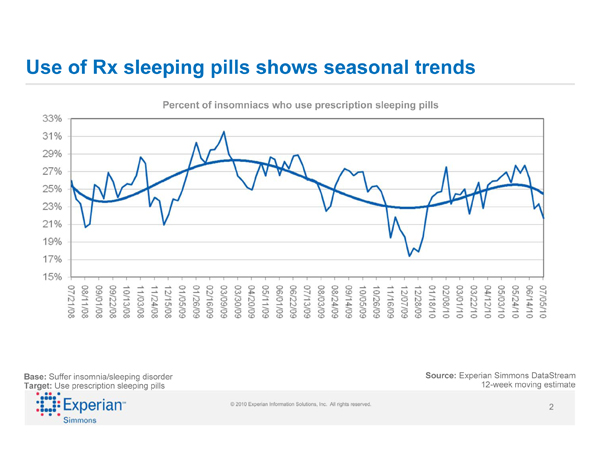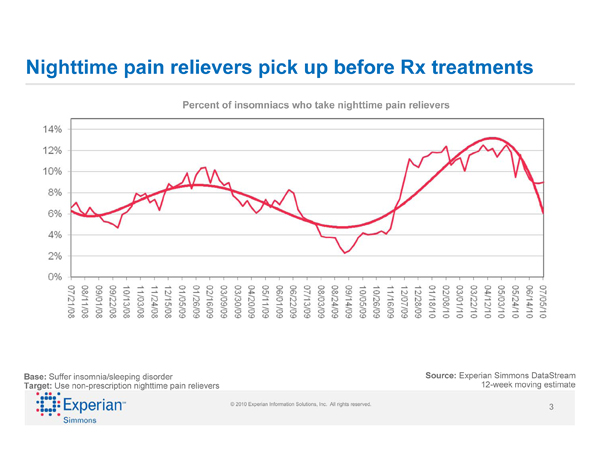With the current state of the economy and world affairs, it’s easy to understand that many people would have trouble sleeping these days. Interestingly though, the percent of Americans with insomnia held remarkably stable between July 21, 2008 and July 5, 2010. Simmons DataStream finds that during any given week in that timeframe between 5.5% and 6.8% of the U.S. adult population reported suffering from insomnia or another sleeping disorder. On July 5, 2010, there were fully 15 million adult insomnia suffers in the United States.
Despite the surprising stability of insomnia sufferers in this country, the treatment of the disorder has it’s ups and downs, depending on the season. In the past two years, an average of 25% of insomniacs reported taking prescription sleeping pills. Week-by-week, however, the use can be much higher or lower than the average. In fact, Simmons DataStream shows a clear spike in use of prescription sleeping pills in the weeks just before the start of the winter holidays. On December 14, 2009, for example, 17.4% of insomniacs sought a prescription solution to their sleeping problems, but by February 8, 2010, that number had jumped to 27.5%, an increase of 58% in less than two months. A similar spike was observed during the winter of 2008/2009. After both peaks, the use of prescription sleeping pills began to gradually taper off again.
It appears as though insomniacs are giving non-prescription remedies a try before visiting their doctor or pharmacist. We suspect this becausthe spike in the use of over-the-counter nighttime pain relievers in the weeks before the observed jump in use of prescription sleeping pills. This trend was most pronounced in 2009 when use of these over-the-counter pills began to noticeably rise the week of November 16th, almost a full month before the observed spike in prescription pills.


